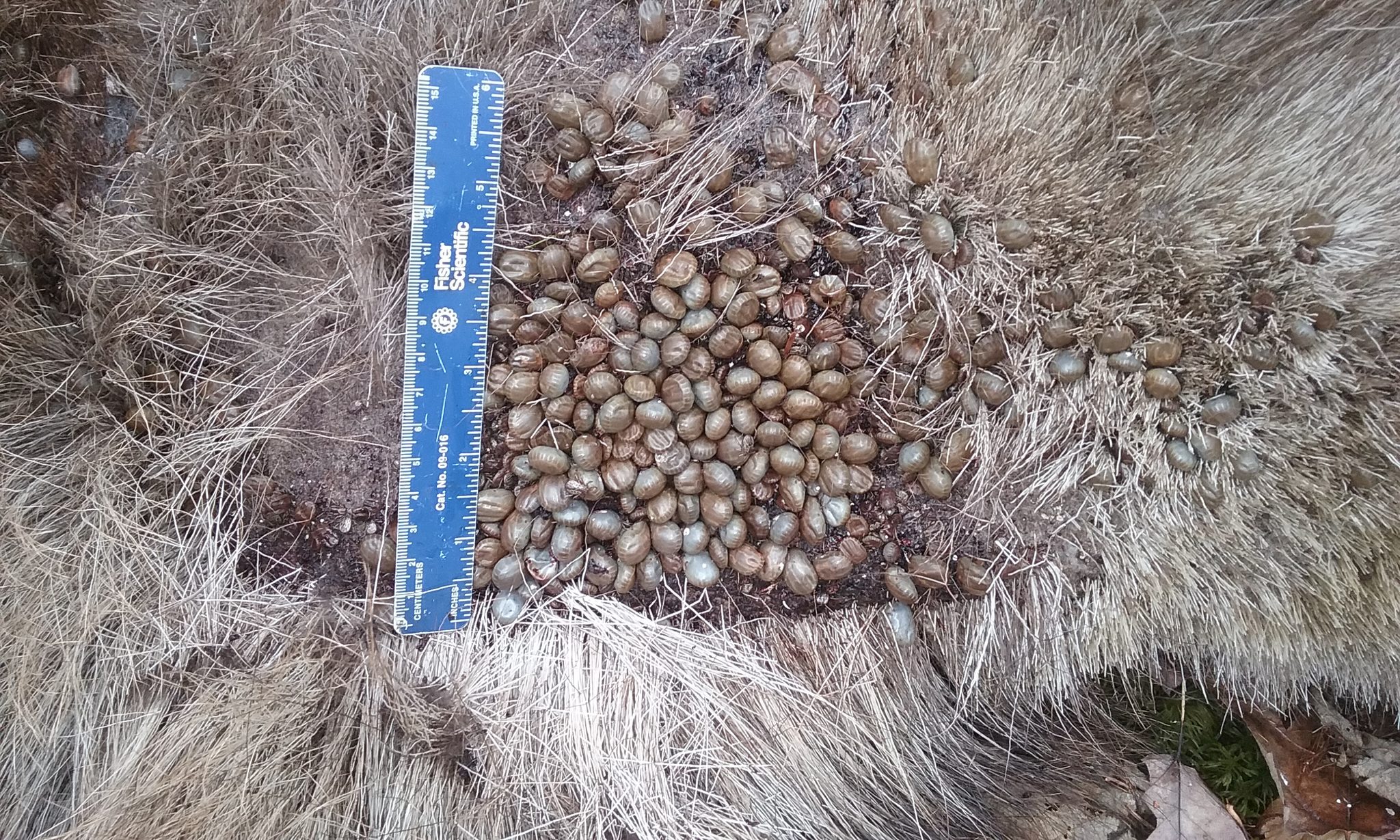Winter ticks are killing moose across New England in alarming numbers, latching onto their hosts by the thousands and draining so much blood that the animals have been described as “zombies” before they collapse from anemia. With warmer summers, shorter winters, and less snow cover, these vampire-like parasites are thriving, spreading across New England and threatening the future of one of the region’s most iconic species.
Winter ticks, also known as moose ticks (Dermacentor albipictus), are external parasites that attach to the skin of their hosts. While they do feed on other species, winter ticks primarily target moose, latching on in the fall and feeding throughout the winter. Infestations can reach up to a staggering 90,000 ticks per animal.
Unlike deer ticks or dog ticks, which hunt for their hosts individually, winter ticks locate their victims through a method called “questing.” They interlock limbs, teaming up to form clumps of thousands. When one tick manages to climb aboard an unsuspecting warm-blooded passerby, they all embark together.
Although winter ticks only measure about a quarter-inch in length, they find strength in numbers, bringing 750-pound beasts to their knees. An infestation of these tiny ticks can cause hair loss, anemia, and severe weight loss.
“They suffer horrible, slow deaths,” Josh Bluin, a wildlife biologist with the Vermont Fish and Wildlife Department, told Wired. “These majestic animals are curled up, skin and bones. It’s a sad sight.”
While a healthy adult moose may be able to survive a blood-sucking load of ticks, small calves are another story. Studies have shown calf mortality rates as high as 86 percent in parts of Maine due to winter tick infestations.
Pregnant cows also suffer from tick overload, emerging from winter physically depleted and less fertile, according to Bluin. Vermont has experienced a 45 percent decline in its moose population over the past decade, a reduction attributed mainly to winter ticks.
Because winter ticks thrive in areas with high moose densities, reducing herd numbers could lead to healthier moose populations. In response, some states have turned to what seems like a Hail Mary move — hunting more moose.
In hopes of breaking the tick infestation cycle, Maine increased the number of cow permits issued in its core moose range. New Hampshire employed a similar strategy, adding to the number of moose permits available in the state.
It may seem counterintuitive, but biologists say it’s a necessary trade-off: fewer moose, but stronger survivors.
“I guess that’s the debate,” field biologist Eric Orff told the New Hampshire Bulletin. “Is it better to have far fewer moose and less sickly moose? … Baby moose that drop dead from no blood in April, or taking some of them out that will be utilized by hunters eating them?”
Read Next: How Big Is a Moose?
Despite the increase in moose permits, it’s still a challenge to get moose tags in some parts of the Northeast. Most states offer permits through a limited lottery system, with preferential treatment given to residents. And with a large number of hunters vying for a relatively low number of permits, the odds of drawing aren’t exactly favorable. For example, in 2024, 72,294 people applied to get one of 4,105 Maine moose permits. That’s only a 5.7 percent success rate. In New Hampshire, non-resident hunters had a 1 in 498 odds of drawing a tag.
Read the full article here





